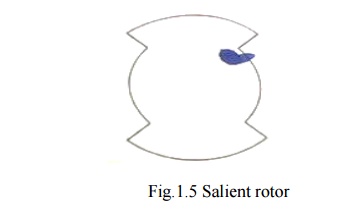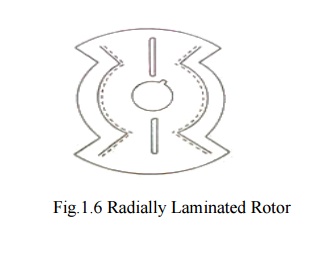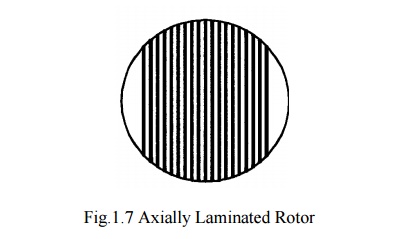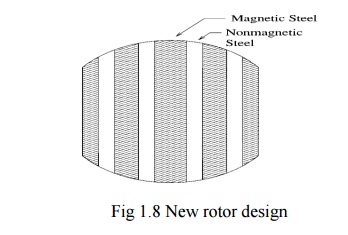Chapter: Special Electrical Machines : Synchronous Reluctance Motors
Rotor Design - Synchronous Reluctance Motor
ROTOR DESIGN
1. Salient rotor (Segmental)
Salient
rotor shape such that the quadrature air gap is much larger than the direct air
gap. This yields reactively small Ld/Lqrations in the
range of 2.3.

Salient
rotor design is as shown. The low Ld. /Lqratios are
largely the result of circulating flux in the pole faces of the rotor. However
the ruggedness and simplicity of the rotor structure has encouraged for high
speed applications.
2. Radially Laminated Rotor (Flux
Barrier)
Another
approach is to use laminations with flux barriers punched into the steel for a
4 pole machine. The flux barriers and the central hole of the lamination
required for the shaft weaken the rotor structurally and thus make this
approach a poor choice for high speed design.

3. Axially Laminated Rotor

Two pole
phase axially laminated rotor with a Ld. /Lqratio of 20,
the maximum efficiency is 94% has been reported in the literature. It is
observed that torque ripple and iron losses are more axially laminated rotor
than radially laminated rotor.
Another
rotor design as shown in fig. The rotor consists of alternating layers of
ferromagnetic and non-magnetic steel. If choose the thickness of the steel such
that the pitch of the ferromagnetic rotor segments matched the slot pitch of
the stator. The ferromagnetic rotor segments always see a

stator
tooth pitch regardless of the angle of rotation of the rotor. This is done to
maximize flux variations and hence iron losses in the rotor.
Special
rotor laminations make it possible to produce the same number of reluctance
path as there are magnetic poles in the stator. Synchronous speed is achieved
as the poles lock in step with magnetic poles of the rotating stator field and
cause the stator to run at the same speed as the rotating fields. The rotor is
pressures with end rings similar to induction motor .Stator winding are similar
to squirrel cage induction motor.
Related Topics